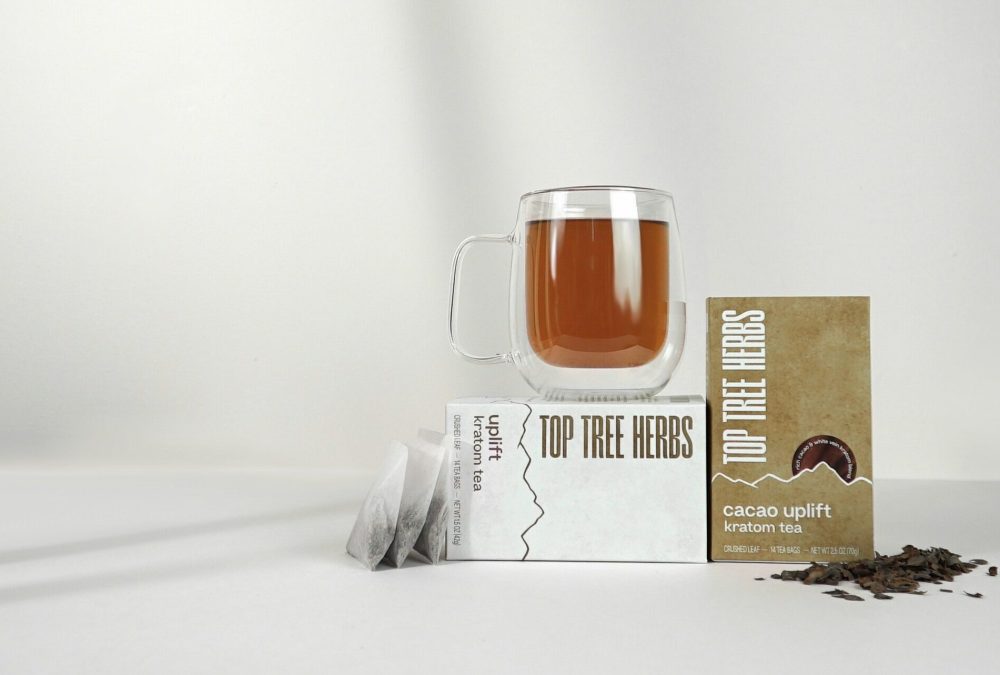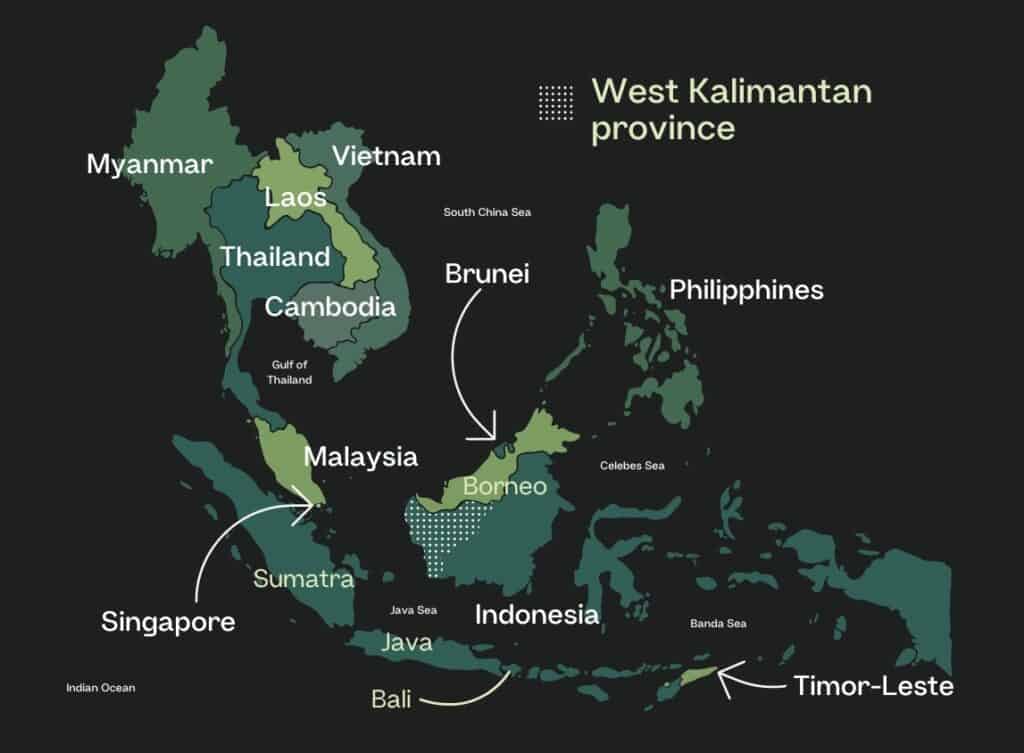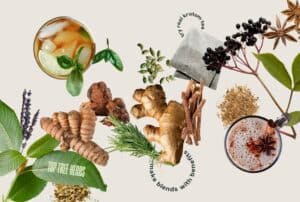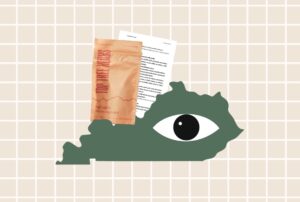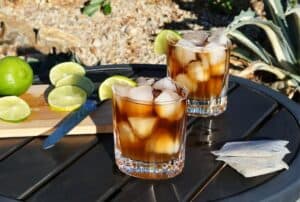Starting in August of 2023, Top Tree Herbs’ teas will look pretty different. Within the boxes will be the same high-quality crushed-leaf kratom you know and love, but the teas won’t have kratom strain names anymore. The next line of teas will have only a vein color—red, green, or white—and a name that tells you a little bit about the flavor and feeling you can expect from the tea bags inside.
Kratom without a strain?!
We know, it’s fairly uncommon in the American kratom market. Yet this is a transition we’ve considered at great length, and it’s the most straightforward and honest next step for us at Top Tree. Read on to find out why!
- Kratom strains: fact and fiction
- Are other vendors’ strain names dependable?
- Using kratom vein colors without strains
- Reconceptualizing norms in a challenging industry
- The inside scoop on Top Tree’s new “strainless” kratom teas
What is a kratom strain, really?
We’re going to let you in on a not-so-little secret: kratom strains aren’t what most vendors claim them to be. They’ve become mythological, and as with any good myth, there are so many variations of the story of what strains are that you’re probably not even sure which one to not believe.
“Malay kratom comes from Malaysia, and Bali kratom comes from Bali. Thai kratom comes from kratom trees in Borneo that are genetically related to kratom trees once grown in Thailand. Elephant kratom comes from the largest leaves found on a kratom tree. Maeng Da kratom is made by grafting together a Bali kratom tree and a Thai kratom tree…”
The list goes on. Within it, there may be a few kernels of truth, but overall, kratom strains and vein colors have become a misleading, muddled mess. And not the good kratom mojito kind of muddled—it’s the confusing, lose-seven-hours-of-your-day-reading-about-kratom-strains-on-Reddit kind of muddled.
Why did Top Tree use kratom strain names before?
Top Tree is partially responsible for perpetuating the myth of strains. While we’ve written at length in the past about how strains do not mean what they used to, we still labeled our kratom with strain names up until this point.
Habits, especially bad ones, are notoriously difficult to break. When we first started making kratom tea bags in 2020, we wanted to disrupt the whole kratom industry. We saw a yawning abyss between the way kratom has traditionally been consumed and how Americans currently consume it.
We boldly set out to change the kratom landscape, but as newcomers, we weren’t able to take on every problem at once. We started out by offering crushed-leaf kratom tea instead of kratom powder, and that first step was a resounding success.
Now the time has come to make another leap of faith into the unknown, driven by our passion for kratom and our commitment to honesty. We will no longer be participating in the manufacturing and imagining of kratom strain names.
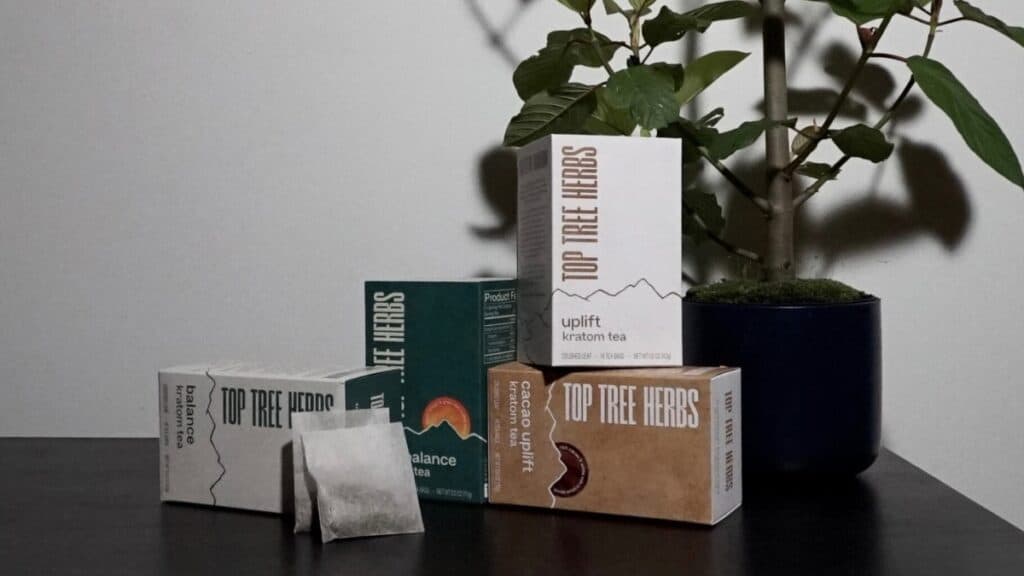
How Do Kratom Vendors Choose Strain Names?
For context, kratom vendors typically categorize their kratom products according to first the vein color (like white, green, or red), then the strain name (such as Borneo, Maeng Da, or Thai).
Some kratom vendors are transparent in their explanations of how they apply strain names to their kratom. For instance, some vendors explain to customers that they use the name Maeng Da for their kratom batches with the highest concentration of mitragynine, and they call their strains with lower mitragynine concentrations Bali or Java. They don’t make fantastical claims about the size of the leaves or the leaf color or their country of origin, and they don’t offer 30 different strains just to try to sell you a new one every two weeks.
Other vendors aren’t so forthcoming. They always seem to have a new strain available for sale, and they write article after article on the unique botanical origin and benefits of each of the strains they offer.
So at their worst, strains are made up by vendors to intentionally mislead customers and increase sales. At their best, strains are subjectively determined by kratom vendors to give you a sense of familiarity and understanding of what kratom product you’re buying – but it’s usually a very subjective sense.
Understanding the Maeng Da Kratom Label
This is most obviously elucidated by looking at the Maeng Da kratom strain. “Maeng da” literally translates to “pimp grade” in Thai. As such, some vendors denote their most alkaloid-rich batches with the Maeng Da title. Conversely, some vendors may give the Maeng Da title to a random strain and hope that consumers assume it’s strong and enjoy it regardless of its alkaloid content.
Maeng Da kratom is clearly not a variety that comes from a specific kratom tree gene pool. Kratom tree genetics can certainly be a factor in the alkaloid profile and strength of a batch of kratom, but it’s one of many factors.
Kratom Geography
As for geographical strain names? In 2022, well over 90% of all kratom sold in the United States originated in Indonesia. Yet even some Indonesian strain names, such as Bali kratom, are likely deceptive.
Where does most kratom really come from?
At one point in time, Bali kratom may have been grown in Bali. Currently, however, West Kalimantan—an Indonesian province on the island of Borneo—is the source of a vast majority of the nation’s kratom crop. Furthermore, all Thai kratom strains sold prior to 2021 were almost certainly not sourced from Thailand, as kratom had been illegal there from 1943 to 2020.
The fact of the matter is, titles like Maeng Da, Sumatra, and Thai do not reliably tell you what alkaloid ratio, effects, or taste your kratom will have. One vendor’s White Maeng Da kratom that they sell this year could be distinctly different in its effects from the one they offer next year, and two White Maeng Da products sourced from different vendors could also vary considerably.
The strain names are more often than not based on the vendors’ experience of the batch or a subjective assessment of lab test results. Typically, strains aren’t based on any replicable or meaningful data such as alkaloid content or geographic origin.
Are Kratom Vein Colors Any Better than Strains?
Vein colors are much more consistent indicators of the effects and flavor that kratom products may provide, despite the fact that there are some taxonomical issues with vein colors as well.
Ready to be let in on another secret? The term “vein color” has also become a misnomer. Veins are the parts of leaves that provide structural support and transport nutrients between the leaves and the rest of a plant. However, the term vein color in the kratom world doesn’t refer to the color of the leaf veins.
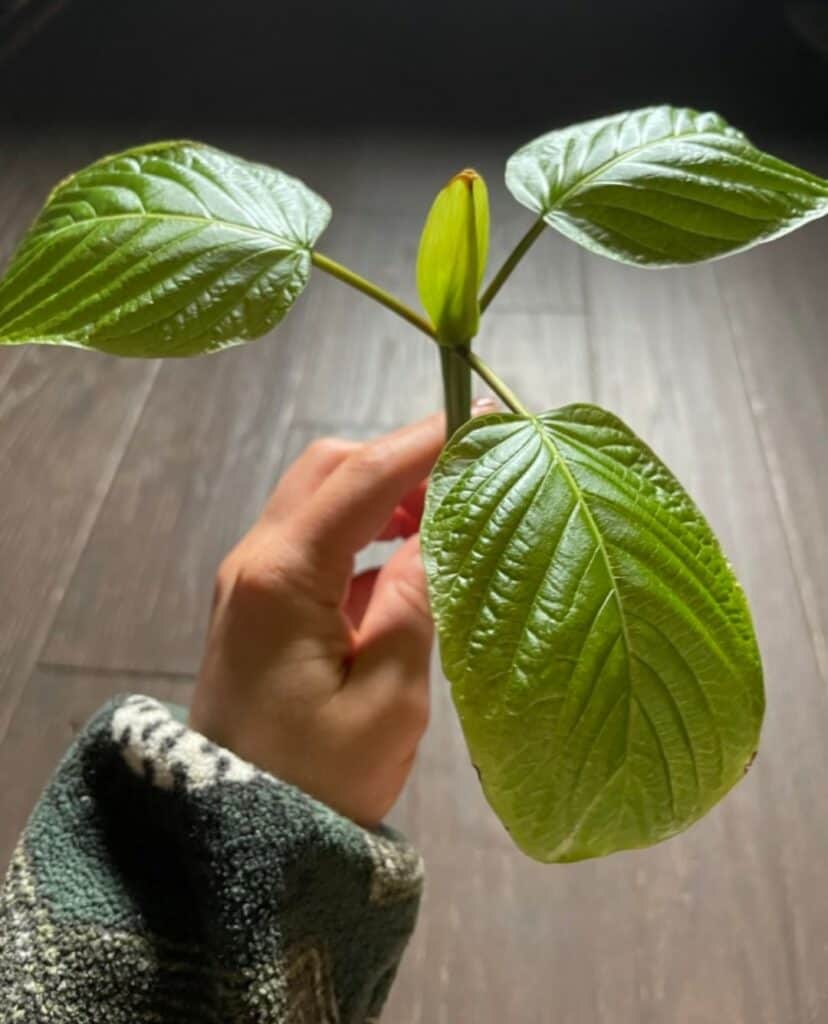
Kratom trees do sometimes to have distinctly whitish or reddish leaf veins, and this change in vein color is often associated with the age of the leaf. Even so, over 400 tonnes of kratom are shipped to the United States from Indonesia every month; because of how quickly farmers have to compile these batches, it’s extremely unlikely that they’re picking and sorting the leaves based on their literal vein color.
The Giving Tree of the Indonesian Rainforest
How are kratom leaves collected, if not by age and size? Well, farmers strip leaves from branches lower to the ground and pack them in sacks. To get the leaves from the upper parts of the tree, they may unceremoniously lop higher branches from the trunks before pulling off leaves. The sacks are then brought back to a centralized location for the curing process.
Fortunately, Mitragyna speciosa is a very resilient species (as we know from growing them ourselves in a region very different from the one they are native to). The trees can routinely be picked bald and return in full force in a matter of just days or weeks.
Drying Kratom Leaves to Create Vein Colors
If you’ve tried a variety of kratom powders, you may have noticed slight differences in the color of the powders. So if the vein color doesn’t refer to the literal color of the leaf vein, what determines a kratom product’s vein color?
In the kratom world, people use the term vein color to instead describe the general hue of the kratom leaf particles after they’ve been harvested and cured. The most likely reason for the color difference is how the kratom leaves were processed following their harvest.
Many people say that red vein kratom comes from being dried in the sun, white vein kratom is cured indoors (out of direct sunlight) and green vein kratom is cured using a mix of red and white vein techniques. The resulting oxidation (or lack thereof) affects the kratom alkaloids in a consistent manner, creating predictable categories that can be used to tell consumers what the alkaloid content and effects of their kratom will likely be.
However, there aren’t really set guidelines for what officially qualifies as a green, red, or white vein processing method! So one farmer’s curing techniques might be different from another’s, yet still produce similarly tinted kratom leaves. Inconsistency issues like this are pervasive in the kratom industry. Nevertheless, for the time being, kratom vein colors are still the best indicators we have of the general feeling and functionality of various kratom products
Forgoing Kratom Industry Norms
Selling kratom is a challenge. There’s no getting around that. Kratom isn’t officially recognized as a food by the FDA, so vendors aren’t federally required to follow food safety regulations that would ensure industry-wide product quality and cleanliness.
Putting People, Plants, & Planet Over Profit
It’s up to each and every vendor to do their own kratom testing and guarantee that the kratom that they are selling is pure and free from unsafe amounts of heavy metals or pathogens. At Top Tree Herbs, we test every batch for quality and contamination, but not every kratom company does this. Some kratom vendors skip this expensive and time-consuming step to get an economic advantage over vendors who do it. Yet in our eyes, these quality standards are necessary, not optional.
Since our inception, we’ve done what other vendors have done in regards to strains. We purchase our lab-tested kratom from AKA cGMP certified importers. Upon receipt, the only label that’s already attached to the crushed leaf kratom is the vein type. Previously, depending upon the effects we felt from sampling the various batches, we gave them a strain name typically associated with those effects.
Decisions Driven by Care & Honesty
When we first started, we thought the only way to survive was to work within the same framework as other kratom businesses. The myths are so ingrained across the industry that no one has ever called us out on the issues with the process. We haven’t felt any external pressure to change our practices—we’re driven by our own interest in being 100% upfront with our customers.
We care most about your long-term wellbeing and safety, not our own gain. Perpetuating myths will not help consumers be more educated or safe—and thus will not be good for the kratom community in the long term.
Going forward, we will be labeling our kratom products according to their vein color. Each tea will have a name that will clue you in to the potential effects and pleasure you might get from drinking it. On every box will be the ingredients, serving size, and unique alkaloid content of the tea inside.
No more fake names. No more saying one thing and doing the other.
Out with the Old, In with the Brew
Now that we’ve covered the dirty details of strains and why we’re getting rid of them, it’s finally time to introduce you to our new line of crushed-leaf kratom teas.
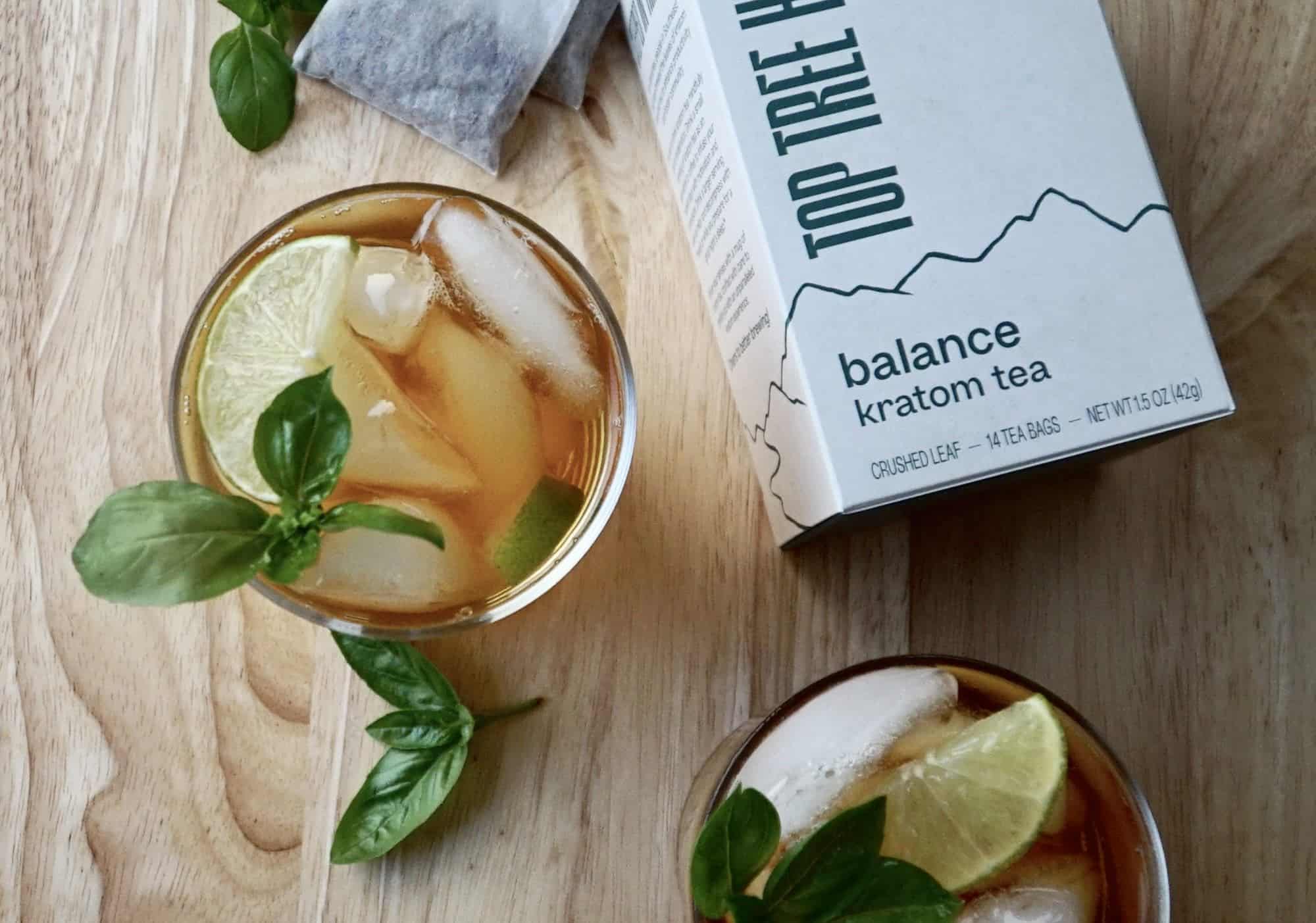
Introducing Uplift, Balance, and Unwind
Uplift is our new white vein kratom tea that’ll provide the focusing and motivating edge that you love so much in our old White Thai, White Borneo, and White Maeng Da strains. Try raw leaf Uplift kratom tea bags, or Cacao Uplift, a rich blend of white vein kratom tea and organic cacao shells.
Our Balance tea bags are the ultimate midday pick me up, a green vein kratom tea that will support body & mind together, similar to our old Super Green Malay and Green OG Green Bali teas. We’ll have raw leaf Balance as well as Tulsi Balance, a bright peach- and mango-flavored blend.
Instead of Red Bali, Red Maeng Da, and Red Dragon, our red vein kratom tea bags are now called Unwind. Unwind ticks off all the boxes of the famous “red is for bed” epithet. Sip on raw leaf Unwind or try Chai Unwind, a perfectly spiced blend of chamomile, chai, and red vein kratom.
Bigger & Better Blends
The new blends—Cacao Uplift, Tulsi Balance, and Chai Unwind—will be different from our previous blends or flavored kratom teas. Our old blends contained half the amount of kratom as the standard raw leaf tea bags, but the new blends contain the full 3g of pure kratom leaf as well as 2g of organic herbs and spices!
Overall, the Uplift white vein options will lean more towards the caffeine replacement functionality. Unwind red vein teas are oriented towards evening relief and relaxation. The green vein Balance teas are the lovely intermediate. Keep in mind, however, that kratom’s effects are in no small part determined by the serving size of kratom that you consume, as well as your unique physiology.
No Need to Strain Yourself Thinking About Strains
The information above can be overwhelming and difficult to conceptualize, especially because the story of strains changes frequently (as does the kratom market as a whole). The main takeaway is that strain names frequently fail to tell you what you need to know about your kratom. Ultimately, the most effective way to find out how a specific type or batch of kratom will effect you is to try it yourself!
We didn’t make the decision to get rid of kratom strains for our teas lightly, and we know in the beginning it may cause some confusion. If you have any questions on why we’re making the switch or how to choose the strain-free kratom tea that’s best for you, reach out to us any time through our contact form, over the phone, or via email. Our team will be working diligently to make the switch as easy—and delicious—as possible over the next few weeks.
Thanks for joining us on this new kratom tea adventure, and as always, cheers to better brewing!
